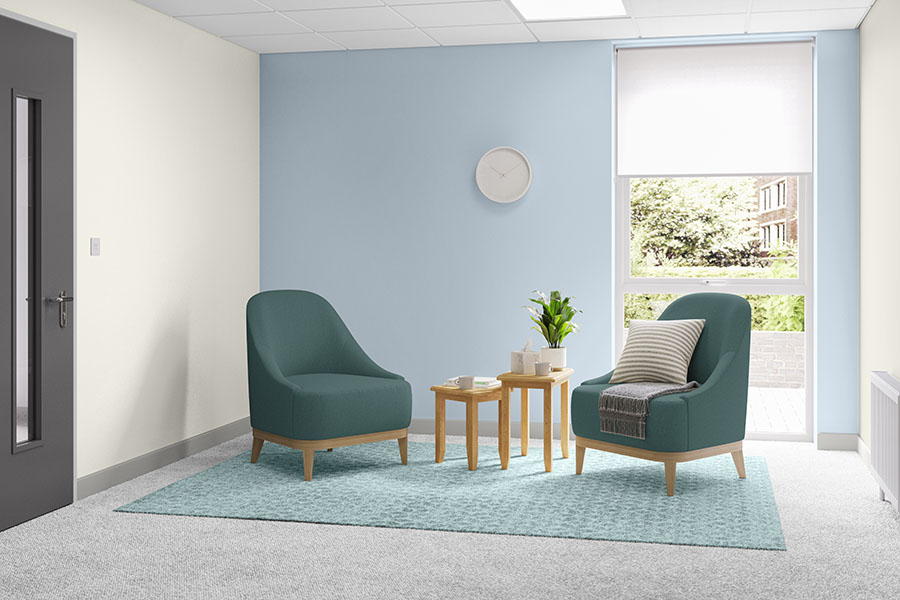Working in care homes – a tailored approach

September marks World Alzheimer’s Month – an annual international event that looks to raise awareness and challenge stigma surrounding the disease. In light of the campaign, we spoke to Andrew Cleaver, National Sector Manager for Healthcare at Dulux Trade to get his top tips for decorators working in the care home sector.
There are over 17,000 care homes in the UK and according to studies by building and construction market researchers AMA, “the demand for additional capacity within the care home market is likely to start rising again within the next couple of years.”
With premises potentially looking to remodel or renovate to accommodate more residents, there is opportunity for decorators to win work in the care home sector. However, this environment poses a unique set of challenges that decorators must know how to tackle.
- Working in a live environment
Due to their nature, care homes need to remain up and running at all times – even during decoration work. This means that decorators need to build a strong working relationship with care home staff and communicate with them regularly to make sure everything runs smoothly, and disruption is kept to a minimum. For example, letting staff know which rooms will be out of action allows them to plan and relocate residents for the day.
As it can be difficult to store materials on site, planning smaller, more regular deliveries is preferable. Decorators should work with suppliers and the care home to schedule deliveries at convenient times and always ensure they allow staff and emergency services access to the car park as needed.
- Keeping things neat
To keep everyone safe, it is imperative that tools and materials are never left unattended, and the work area is kept as tidy as possible to reduce the number of hazards. This is crucial, as staff may need to access the area and residents may wander into spaces being decorated.
At the end of the workday, decorators should make sure that everything is packed away and out of sight. As such, planning time for set up and pack down each day should be factored into work schedules, to make sure the client is given an accurate project timeline – and decorators can quote accurately.
- Using colour to your advantage
Colour can make a huge difference to those living with dementia as it can aid wayfinding and help them to maintain their independence. When speaking to customers about colour schemes, it is important to keep in mind that critical surfaces (walls, floors and doors) should all contrast in colour.
For example, soft, calm tones like the Dulux Colour of the Year 2024, Sweet Embrace, are a good choice for main walls. However, more saturated tones like Peanut Butter or Fireside Embers from the accompanying Colour Futures Warm palette should be used for doorways and feature walls to make these elements stand out and aid wayfinding.
In contrast, staff only areas and supply cupboards should be painted in the same colour as the walls so that they blend in, helping to avoid unauthorised access.
To provide additional support for decorators and their customers with colour choice,Dulux Trade – alongside the British Research Establishment – created a Dementia Friendly Colour Palette. This helpful asset suggests a range of colours that are ideally suited to the care home sector. For further advice and more information about the Dulux Trade Dementia Friendly Colour Palette, please visit Advice OCCD Hub.







